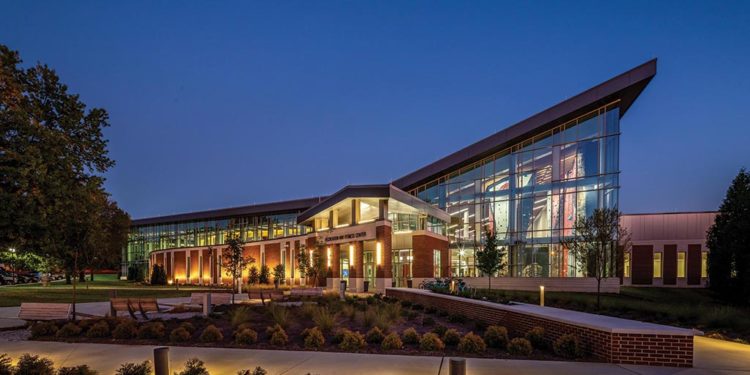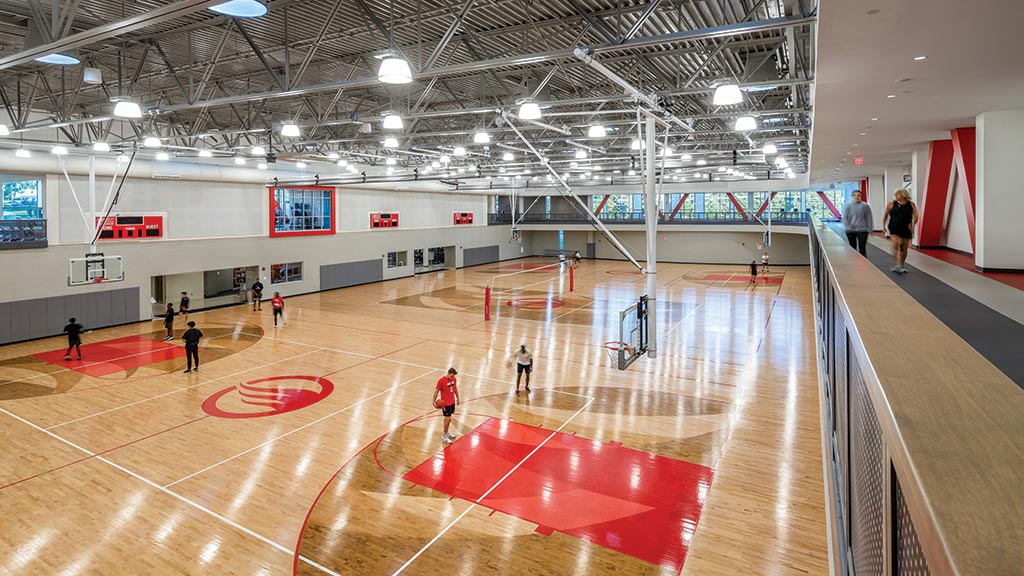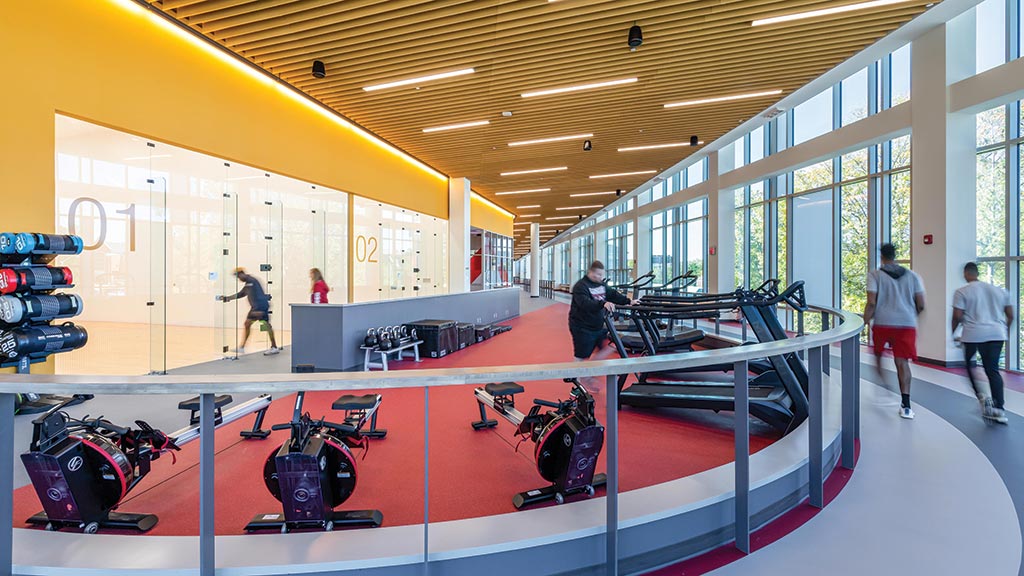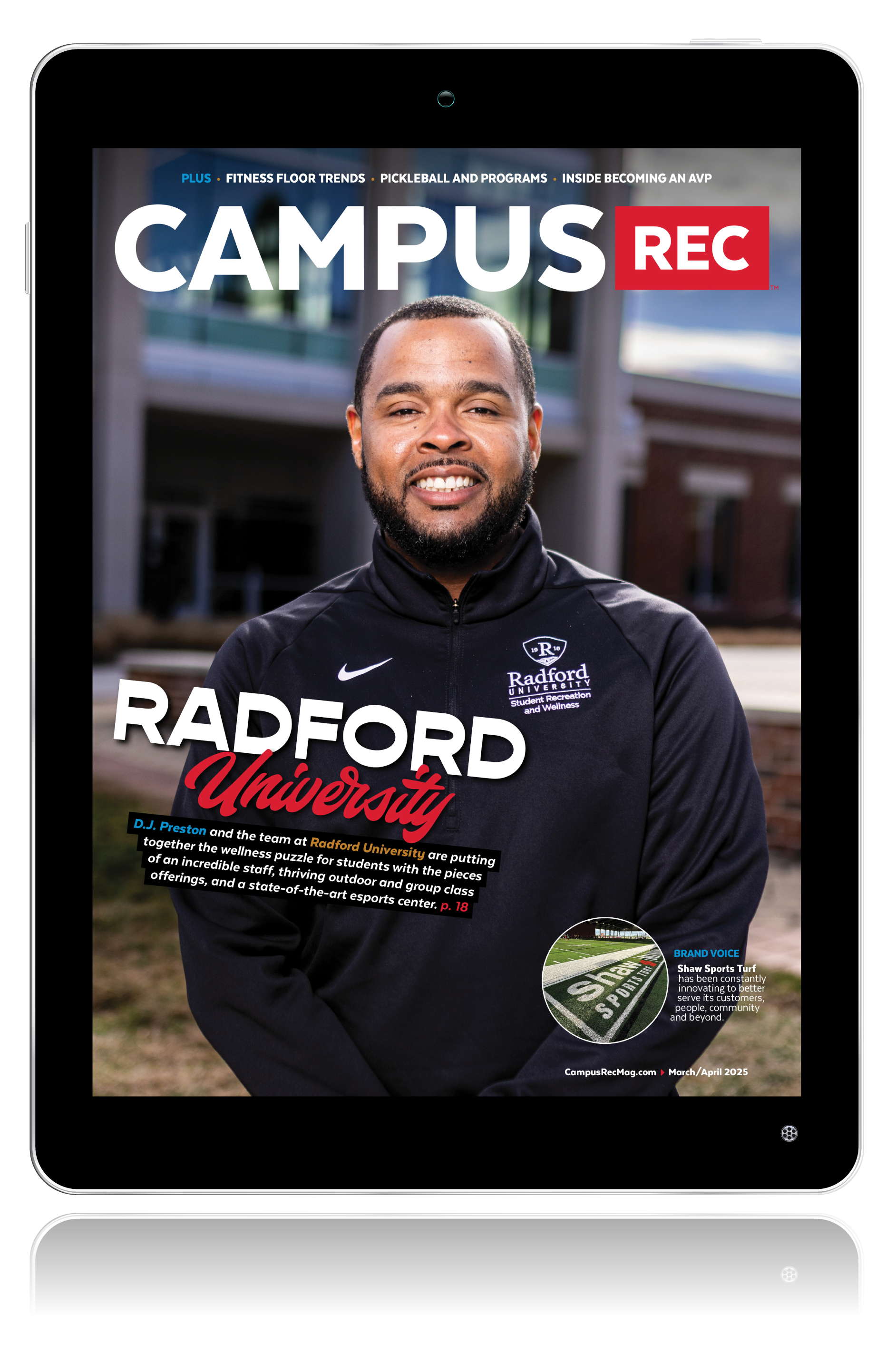After Jacksonville State University’s (JSU) 101,000-square-foot recreation center opened in January 2019, enrollment increased by 6% the next fall semester.
Moody Nolan — the architecture firm on the project — noted the aim of the new facility was to enhance the quality of campus life, and increase student retention and enrollment. It’s a goal that reflects the overall trend in the industry of campus recreation.
“Designed with ample social space, high technology and a dedicated entry for the MAC gym, the facility functions as a whole campus destination,” said Jennifer Rittler — AIA, NOMA, NCARB, LEED AP BD+C, Well AP, Fitwel Ambassador and associate principal at Moody Nolan. “The facility was designed with flexibility for event hosting capabilities. The center hosts campus galas, fundraisers, community parties and more to bring in additional revenue.”
This “campus destination” idea isn’t unique to JSU. Rittler said it’s something Moody Nolan has seen in the world of architecture and renovations. “Overall, our clients are viewing the entire campus as a whole and how the overall recreation experience impacts students,” she said. “For instance, for the University of Maryland campus plan study our team is evaluating new recreation and student amenity facilities at their growing South campus.”
Moody Nolan is Staying on Top of Trends
Noticing and being on top of these trends is a must for Moody Nolan. Over the 40 years it’s been around, the architecture firm has seen plenty of change, with 25 of those years spent specializing in the creation of collegiate recreation facilities.
However, Rittler said success resides in the diversity of projects Moody Nolan designs, which means the firm and its team are constantly learning. Recently, she noted they’ve grown more aware of the importance of incorporating wellness and well-being of students and staff into the facilities the firm helps create.
“We, as architects, can advocate for autonomy and power of choice for students, staff and the community,” said Rittler. “Within well-designed spaces, individuals should be encouraged and empowered to begin and continue their wellness journey.”
Sometimes to achieve this, it means making something new. For instance, Rittler shared a new facility that recently opened at Morgan State University is a high-rise with 660 student residential units, a 40,000-square-foot dining facility, and has fitness, wellness and counseling spaces distributed across 10 stories of student residences. It’s a mixed-use space that looks to help students be well where they live.
“This approach provides a nexus of student resources, welcoming students to their new home, and includes campus dining, dietitian services, a convenience store and more,” said Rittler. “This is an example of multiple auxiliary areas coming together supporting students in one hybrid campus facility to elevate the campus experience.”
EXTRA CREDIT: Since 1982, Moody Nolan has been striving from coast to coast.
Another trend Rittler has noticed in the industry is a rise of public-private partnerships (P3) and mixed-used projects that incorporate campus recreation.
In fact, JSU was the second collegiate student recreation facility in the country ever built under a P3 structure. “We see a growing trend of alternate project delivery models to achieve campus development goals, including a new P3 for Howard University’s Health and Wellness Center,” said Rittler.
In fact, based on what Moody Nolan has been seeing, Rittler strongly encouraged campus rec centers to consider on and off campus partners and services in capital improvement projects. The benefits both financially and in creating a unique campus environment are second to none.
All in all, alternate delivery models and unique partnerships have come about simply to serve students best. Just as campus recreation is doing things different, Moody Nolan too has shown it’s not afraid of doing something out-of-the-box to serve clients.
Rittler shared they brought together an unconventional team when working with Wilberforce University. “The team not only included planners and architects but also included developer services and economic analysis to leverage the business case for the university,” she said. “We have strengthened our engagement approach, specifically how we serve under-resourced students and institutions. With our breadth of diverse national expertise, we can provide recommendations and create the right team to assist our partners.”
How to Create Campus Destinations
But creating campus destinations doesn’t just happen. Rittler explained that as a firm they listen, empathize and provide solutions in order to create energizing, inclusive facilities.
Plus, knowing every campus rec center has unique needs is crucial. For instance, Rittler noted they are having in-depth conversations about free zone space and the location of the control point with Michigan State University (MSU) for its new Health, Wellness and Fitness center — slated to open in 2025.
In addition, early design planning has been critical with the MSU project. The Moody Nolan team is working to equalize a series of alternates and early release packages to balance the budget, risk and expectations.
It’s within all these moving pieces that Moody Nolan works, creating spaces that have profound effects.
And the firm’s success at this space creation is tangible. For instance, Moody Nolan was named the 2021 American Institute of Architects National Architecture Firm Award recipient. “Accomplishments such as this have provided the firm the opportunity to reach different practice areas, and design larger and more complex recreational and sports projects,” said Rittler. “Despite a global pandemic, the firm has grown exponentially and opened its 12th office.”
With that growth comes a greater ability to impact the industry of campus recreation. As Moody Nolan has shown, it will do whatever it takes to create destinations on campuses around the nation that leave a lasting and profound impact on every student who visits.
For more information on Moody Nolan, visit moodynolan.com/.













